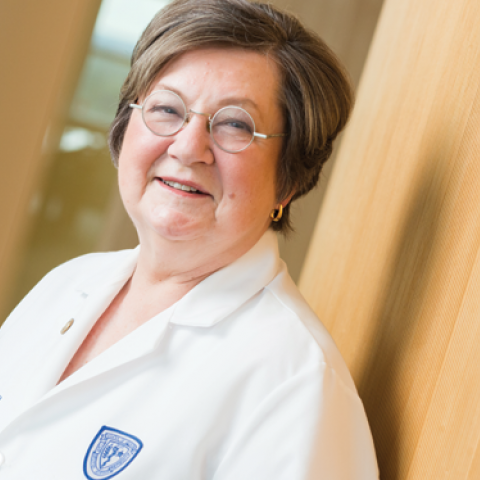In 2012 we began a new emphasis on moving top flight science from our research labs to patients. This required the help of experts in the commercial sector, new investments by us and others, and a culture change within the School. It had to become exciting and important to develop one’s technology. Too many of us held an older academic view that it was somehow improper or unbecoming to press one’s discoveries forward by developing a company or licensing a technology. But we are a medical school, first and foremost aimed at improving human health. It seems almost negligent not to advance a discovery that might improve the human condition.
This cultural and attitudinal shift took several forms. First, we hired translational officers from industry. One of these leaders, Blair Geho, MD, PhD, an alumnus, developed bone building drugs while at Procter & Gamble and subsequently launched several small companies – the latest of which now has a lead drug in phase three trials. Another key hire, Bill Harte, PhD, spent time at Bristol Myers and Amgen, achieving success with oversight of nine investigational new drugs. Blair and Bill were charged with identifying and bringing promising discoveries to an expert panel of industry and finance representatives that we established to identify commercialization candidates for support. These impressively credentialed panel members represent both the science and investing sides of the equation and possess strong track records in companies ranging from early stage entities to large pharmaceutical firms. Many are our alumni.
Next we raised philanthropic funds to create an accelerator fund. Other funding sources include the Case-Coulter Translational Research Partnership, an alliance with Taiwan Medical University, and a grant from the NIH to advance innovation. These resources enable projects endorsed by the review panel to move on to next steps. Led by our Vice Dean Mark Chance, the panel debates the commercial viability for these projects. For example if some technologies are premature, or whether conflicting patents prevent their progress to the marketplace. However, some are recommended for very specific experiments that could make or break their potential success. For those that make the cut, the panel members offer suggestions for proceeding into the commercial space.
Gradually we started to see results. In fiscal year 2018 the medical school spun out eight companies, our most ever in one year. Even more impressive, SOM companies garnered well over $100M in cumulative professional investment. Wow!
This means that several of our technologies have real potential to reach patients. For example, Brian Grimberg’s point of care Magneto-Optical Detection (MOD) device, detects all strains of malaria at low concentrations in under a minute. It is the basis of a company known as Hemex, which won the U.S. Patent for Humanity designation, given to only four patents in its review year. Another company won a “golden ticket” to Lab Central from Pfizer. Several have reached clinical trial stage. And the pipeline is full.
It is rewarding to see our faculty members bring forward great science to benefit patients. Congratulations to all those who participate in this wonderful effort, from the discoverers to the industry experts to the administrators. We all want to see you succeed. As do patients awaiting a better treatment, a surer, more rapid diagnosis, or the cure that you may provide.
Pam


